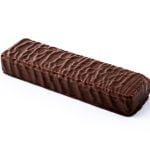
Introduction
Chocolate lovers, puzzle enthusiasts, and riddle solvers, gather around! Have you ever come across the tantalizing conundrum known as the “My First Is in Chocolate” riddle? This delightful brain teaser has captured the imaginations of many, leaving them pondering over its sweet secrets. In this article, we will delve into the world of this riddle, exploring its origins, variations, and the joy it brings to both young and old minds.
The Origin Story
The “My First Is in Chocolate” riddle, often simply called the “Chocolate Riddle,” has a charming history that dates back centuries. It is believed to have originated in England during the 19th century, a time when wordplay and riddles were in vogue among the literate elite.
Deciphering the Riddle
The Classic Version
The classic version of the riddle goes like this:
“My first is in chocolate but not in ham, My second’s in cake and also in jam. My third at tea-time is easily found, And all my whole a useful thing ’tis found. What am I?”
The Solution
The answer to this riddle is “a spoon.” The word “spoon” indeed contains all the specified letters: ‘s,’ ‘p,’ ‘o,’ ‘o,’ and ‘n,’ which can be found in the listed food items and activities.
Variations and Adaptations
Over the years, this riddle has undergone numerous transformations, leading to a variety of adaptations and challenges. Some versions replace the food items with different words, while others play with the concept of ‘firsts’ and ‘seconds’ in creative ways.
Modern Twists
In modern times, the “My First Is in Chocolate” riddle has found its way into various forms of entertainment, including books, movies, and even mobile apps. Some apps offer daily challenges with this riddle, keeping the tradition alive in the digital age.
The Appeal of Riddles
Exercising the Mind
Riddles like “My First Is in Chocolate” are more than just fun pastimes; they provide mental exercise. Solving such puzzles requires critical thinking, pattern recognition, and creative problem-solving skills.
Universal Enjoyment
One remarkable aspect of riddles is their universal appeal. People from different cultures and backgrounds can enjoy the challenge of solving them, making riddles a form of entertainment that transcends boundaries.
The Sweet Conclusion
In conclusion, the “My First Is in Chocolate” riddle is a charming and enduring puzzle that has brought joy and mental stimulation to generations. Its ability to adapt and evolve with the times ensures its continued popularity. So, the next time you encounter this delightful conundrum, remember the rich history and the pleasure it brings in the quest for a sweet answer.
Frequently Asked Questions
- Is the “My First Is in Chocolate” riddle suitable for all ages?Yes, this riddle is enjoyable for both children and adults. It’s a great way to engage young minds and challenge older ones.
- Are there any other classic riddles similar to this one?Yes, there are many classic riddles that involve wordplay and lateral thinking. Some famous ones include the “I speak without a mouth” riddle and the “I’m not alive, but I can grow” riddle.
- Where can I find different variations of the “My First Is in Chocolate” riddle?You can find various versions of this riddle in books, online forums, and riddle apps. It’s a popular puzzle with a wide range of adaptations.
- What other benefits do riddles offer besides entertainment?Riddles promote cognitive development, boost problem-solving skills, and enhance language comprehension. They are a fun way to exercise your brain.
- Is there a specific website where I can explore more riddles and puzzles?Yes, there are several websites dedicated to riddles, brain teasers, and puzzles. You can start by searching for “riddle websites” online to discover a wealth of brain-bending challenges.










